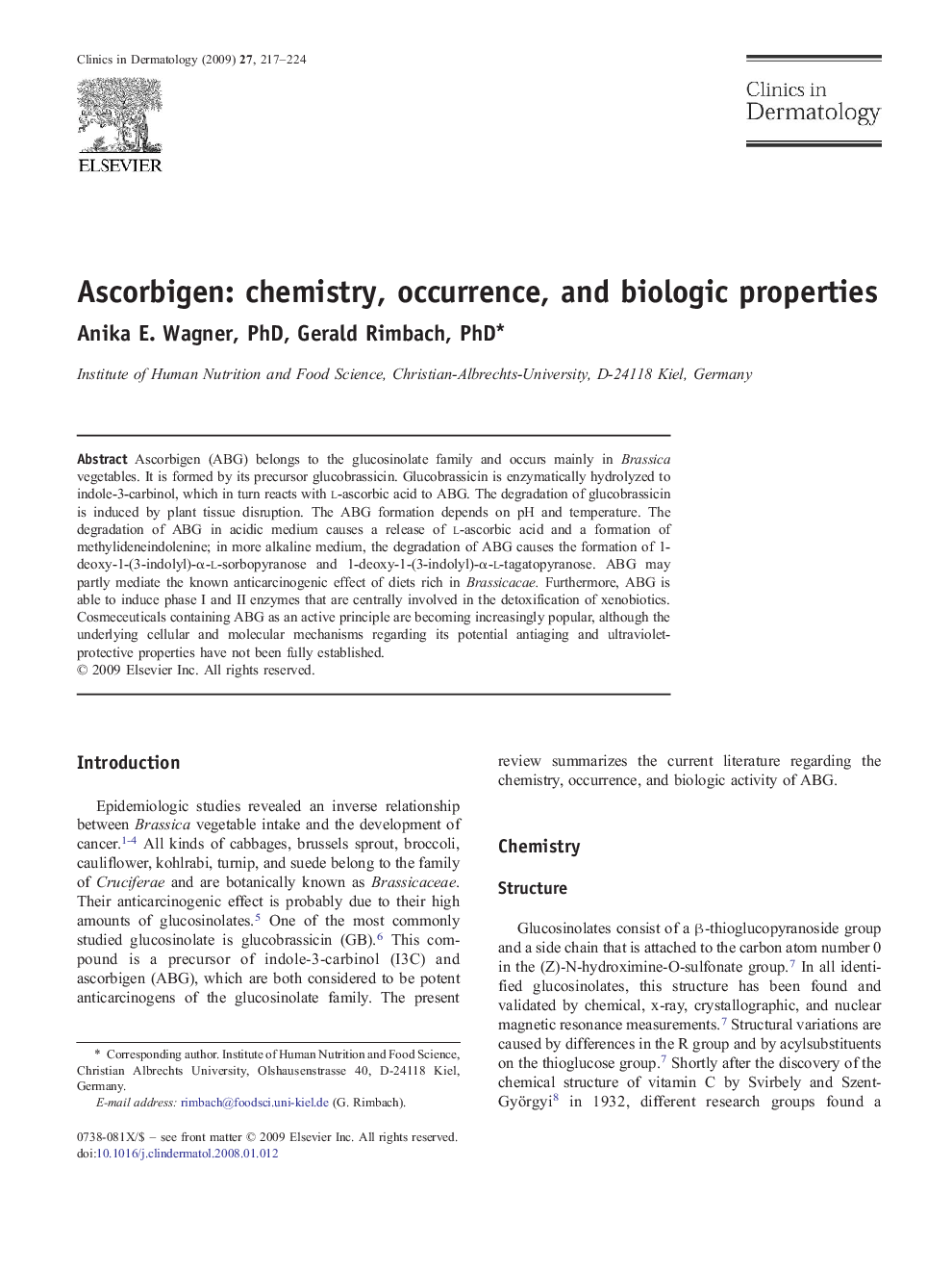| کد مقاله | کد نشریه | سال انتشار | مقاله انگلیسی | نسخه تمام متن |
|---|---|---|---|---|
| 3195060 | 1201422 | 2009 | 8 صفحه PDF | دانلود رایگان |

Ascorbigen (ABG) belongs to the glucosinolate family and occurs mainly in Brassica vegetables. It is formed by its precursor glucobrassicin. Glucobrassicin is enzymatically hydrolyzed to indole-3-carbinol, which in turn reacts with l-ascorbic acid to ABG. The degradation of glucobrassicin is induced by plant tissue disruption. The ABG formation depends on pH and temperature. The degradation of ABG in acidic medium causes a release of l-ascorbic acid and a formation of methylideneindolenine; in more alkaline medium, the degradation of ABG causes the formation of 1-deoxy-1-(3-indolyl)-α-l-sorbopyranose and 1-deoxy-1-(3-indolyl)-α-l-tagatopyranose. ABG may partly mediate the known anticarcinogenic effect of diets rich in Brassicacae. Furthermore, ABG is able to induce phase I and II enzymes that are centrally involved in the detoxification of xenobiotics. Cosmeceuticals containing ABG as an active principle are becoming increasingly popular, although the underlying cellular and molecular mechanisms regarding its potential antiaging and ultraviolet-protective properties have not been fully established.
Journal: Clinics in Dermatology - Volume 27, Issue 2, March–April 2009, Pages 217–224